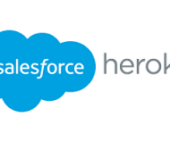Data Cloud Billable Usage
Data Cloud Billable Usage Overview Usage of certain Data Cloud features impacts credit consumption. To track usage, access your Digital Wallet within your Salesforce org. For specific billing details, refer to your contract or contact your Account Executive. Important Notes ⚠️ Customer Data Platform (CDP) Licensing – If your Data Cloud org operates under a CDP license, refer to Customer Data Platform Billable Usage Calculations instead.⚠️ Sandbox Usage – Data Cloud sandbox consumption affects credits, with usage tracked separately on Data Cloud sandbox cards. Understanding Usage Calculations Credit consumption is based on the number of units used multiplied by the multiplier on the rate card for that usage type. Consumption is categorized as follows: 1. Data Service Usage Service usage is measured by records processed, queried, or analyzed. Billing Category Description Batch Data Pipeline Based on the volume of batch data processed via Data Cloud data streams. Batch Data Transforms Measured by the higher of rows read vs. rows written. Incremental transforms only count changed rows after the first run. Batch Profile Unification Based on source profiles processed by an identity resolution ruleset. After the first run, only new/modified profiles are counted. Batch Calculated Insights Based on the number of records in underlying objects used to generate Calculated Insights. Data Queries Based on records processed, which depends on query structure and total records in the queried objects. Unstructured Data Processed Measured by the amount of unstructured data (PDFs, audio/video files) processed. Streaming Data Pipeline Based on records ingested through real-time data streams (web, mobile, streaming ingestion API). Streaming Data Transforms Measured by the number of records processed in real-time transformations. Streaming Calculated Insights Usage is based on the number of records processed in streaming insights calculations. Streaming Actions (including lookups) Measured by the number of records processed in data lookups and enrichments. Inferences Based on predictive AI model usage, including one prediction, prescriptions, and top predictors. Applies to internal (Einstein AI) and external (BYOM) models. Data Share Rows Shared (Data Out) Based on the new/changed records processed for data sharing. Data Federation or Sharing Rows Accessed Based on records returned from external data sources. Only cross-region/cross-cloud queries consume credits. Sub-second Real-Time Events & API Based on profile events, engagement events, and API calls in real-time processing. Private Connect Data Processed Measured by GB of data transferred via private network routes. 🔹 Retired Billing Categories: Accelerated Data Queries and Real-Time Profile API (no longer billed after August 16, 2024). 2. Data Storage Allocation Storage usage applies to Data Cloud, Data Cloud for Marketing, and Data Cloud for Tableau. Billing Category Description Storage Beyond Allocation Measured by data storage exceeding your allocated limit. 3. Data Spaces Billing Category Description Data Spaces Usage is based on the number of data spaces beyond the default allocation. 4. Segmentation & Activation Usage applies to Data Cloud for Marketing customers and is based on records processed, queried, or activated. Billing Category Description Segmentation Based on the number of records processed for segmentation. Batch Activations Measured by records processed for batch activations. Activate DMO – Streaming Based on new/updated records in the Data Model Object (DMO) during an activation. If a data graph is used, the count is doubled. 5. Ad Audiences Service Usage Usage is calculated based on the number of ad audience targets created. Billing Category Description Ad Audiences Measured by the number of ad audience targets generated. 6. Data Cloud Real-Time Profile Real-time service usage is based on the number of records associated with real-time data graphs. Billing Category Description Sub-second Real-Time Profiles & Entities Based on the unique real-time data graph records appearing in the cache during the billing month. Each unique record is counted only once, even if it appears multiple times. 📌 Example: If a real-time data graph contains 10M cached records on day one, and 1M new records are added daily for 30 days, the total count would be 40M records. 7. Customer Data Platform (CDP) Billing Previously named Customer Data Platform orgs are billed based on contracted entitlements. Understanding these calculations can help optimize data management and cost efficiency. Track & Manage Your Usage 🔹 Digital Wallet – Monitor Data Cloud consumption across all categories.🔹 Feature & Usage Documentation – Review guidelines before activating features to optimize cost.🔹 Account Executive Consultation – Contact your AE to understand credit consumption and scalability options. Like Related Posts Salesforce OEM AppExchange Expanding its reach beyond CRM, Salesforce.com has launched a new service called AppExchange OEM Edition, aimed at non-CRM service providers. Read more The Salesforce Story In Marc Benioff’s own words How did salesforce.com grow from a start up in a rented apartment into the world’s Read more Salesforce Jigsaw Salesforce.com, a prominent figure in cloud computing, has finalized a deal to acquire Jigsaw, a wiki-style business contact database, for Read more Service Cloud with AI-Driven Intelligence Salesforce Enhances Service Cloud with AI-Driven Intelligence Engine Data science and analytics are rapidly becoming standard features in enterprise applications, Read more


